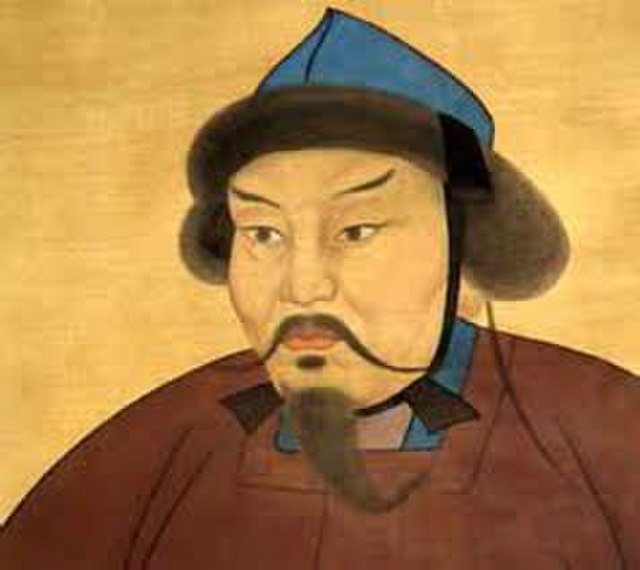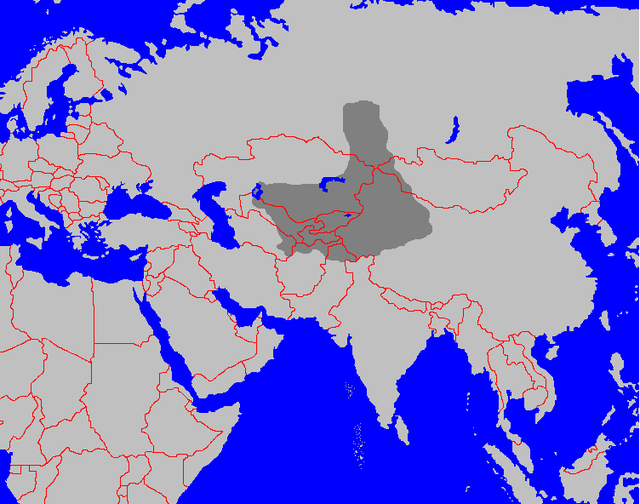Genghis Khan established the largest land empire in history during the early 13th century. At its peak, the Mongol Empire stretched from Eastern Europe to the Sea of Japan, covering large parts of Asia and Eastern Europe. An integral part of Genghis Khan’s conquests was ensuring the continuity of his lineage and dynasty. This blog post will explore Genghis Khan’s many children and descendants that went on to rule different parts of the vast Mongolian Empire he had built.

Children of Genghis Khan
Genghis Khan fathered many children with his wives and consorts. Though the exact number is unknown, it is estimated he had over 35 children. Here is an overview of his most prominent sons and daughters:
Jochi
Jochi was Genghis Khan’s eldest son, born to his chief consort Börte sometime around 1181. As the firstborn, he was initially considered to be the heir apparent but a controversy over his paternity caused Genghis to turn favor to his younger son Ögedei. Jochi received the lands in Central Asia and founded the Golden Horde dynasty that later ruled the area northwest of the Black Sea.
Chagatai
Chagatai inherited responsibility for the Mongol lands east of the Caspian Sea. Known as a stern follower of Mongol tradition, he enforced his father’s laws throughout his lifetime and patrolled the empire’s borders closely but did not seek to seize power or attack other family tribes.
Ögedei
Ögedei was Genghis Khan’s third son and was designated to be the successor after the death of Genghis’ eldest son, Jochi. Under Ögedei, further expansion into China and Europe took place. He oversaw successful campaigns into Korea, Eastern Europe and Iraq before dying unexpectedly in 1241.
Tolui
Tolui was the youngest of four sons born to Börte. Though all four sons were considered legitimate heirs, Tolui served as an officer and general under Genghis rather than a heir due his late birth order. His line of descendants became known as the Toluids and included his famous sons Möngke and Kublai, both elected Great Khans in later years.
Alakhai Bekhi
Alakhai Bekhi was Genghis Khan’s only known biological daughter. Little is written about her personal history or any political role she may have played. The names and details of Genghis Khan’s daughters are generally unknown though he likely had several that married regional nobility and whose descendants became influential in local aristocracies.

Later Descendants and the Division of the Mongol Empire
Upon Genghis Khan’s death in 1227, Ögedei Khan was proclaimed as the successor and leader of united Mongol Empire in accordance with his father’s wishes. The empire grew vast under Ögedei’s command but political divisions emerged among Genghis Khan’s grandchildren. After Ögedei’s son Güyük Khan became Great Khan in 1246, open civil war broke out and the united empire essentially dissolved into four separate khanates, each ruled by direct descendants of Genghis Khan his sons and grandsons. Here is an overview of each khanate and rulers:
The Golden Horde (Northwest)
Ruled by the descendants of Jochi, they controlled areas of Eastern Europe including Russia and Ukraine. The khans of the Golden Horde were responsible for the first introduction of Islam into the Mongol aristocracy. Notable rulers included Batu Khan, Berke Khan, Oz Beg Khan and Tokhtamysh.
The Ilkhanate (Southwest)
The Ilkhanate khanate in Persia and the Middle East was founded by Genghis Khan’s grandson Hulagu Khan. This dynasty conquered Baghdad and ruled Persia until 1335 when their last ruler Abu Sa’id Bahadur Khan died without an heir.
The Chagatai Khanate (Central Asia)
Based in Central Asia, the Chagatai Khanate was ruled by the descendants of Genghis’ son Chagatai Khan. They remained strong Nomadic warriors but internal family conflicts prevented them from expanding further after 1300 though they remained in power until the late 14th century.

The Yuan Dynasty (China, Eastern Asia)
Kublai Khan established the Yuan Dynasty which overthrew the Song Dynasty to rule all of China in 1271. The Yuan consolidated the entirety of the Mongol conquests in China and introduced important economic reforms. Overpopulation and economic decline lead rebellion and finally the overthrow of the Yuan dynasty in 1368, 88 years after Kublai came to power. The Yuan Dynasty represents the final ruling descendants branch of Genghis Khan’s family.
In this way, we see Genghis Khan’s descendants divided and ruled the Mongol Empire for over 150 years after his death until being overrun or absorbed by the next dominant regional powers. No modern rulers can definitively claim descent from Genghis Khan today, but an estimated 16 million men across Asia carry Y-chromosomes potentially linked to the prolific conqueror.
Genghis Khan’s Impact on World History
Genghis Khan’s sprawling empire connected civilizations from across Europe and Asia, facilitating increased trade, adapted technologies and exchange of knowledge. The borders of modern nations like China, India, the Middle East and Eastern Europe bear legacy marks from the routes of Mongol conquests.
Perhaps most significantly, the Mongol conquests enabled greater travel and relations between previously isolated cultures which accelerated the spread of arts and ideas. Examples include:
- Introduction of Chinese technologies like printing, gunpowder and the compass into West Asia and Europe
- Spread of European and Turkic culture into distant Mongol territories
- Transfer of food crops like oranges and sugar between ancient regional empires
- Establishment of trade networks like the famous Silk Road linking distant economies
Of course, while positive advancements did occur, the Mongol Conquests also represented a traumatic loss in human life, destruction of infrastructure and violent disruption of established societies over an enormous geography. Historians continue to debate whether the sudden shock of conquest ultimately yielded net progress for humanity in the long arc of history - or if regional cultures might have been better off without the wars Genghis ushered onto the world stage.

Frequently Asked Questions
Who were Genghis Khan’s most prominent sons and successors?
Genghis Khan’s most historically impactful sons and successors were Ögedei Khan who ruled the united empire as Great Khan after his father and led further conquests into China and Europe. Genghis Khan’s grandson, Kublai Khan, completed the conquest of China, founding the Yuan Dynasty which ruled all of China from 1271 to 1368.
How many children did Genghis Khan have?
The exact number is unknown, but estimates range from 35 to over 40 biological children Genghis Khan fathered with his wives and consorts.
Are there any modern rulers descended from Genghis Khan?
Genghis Khan has no proven direct descendants ruling any nation today. The last ruling dynasty descended from him was the Yuan Dynasty of China which fell in 1368. However, an estimated 16 million men across Asia may carry Y-chromosomes linked to him.
Was Ögedei Khan Genghis Khan’s preferred heir?
Yes, Genghis Khan passed over his eldest son Jochi to designate his third son Ögedei as his formal successor and the next Great Khan - likely due to doubts over Jochi’s legitimacy.
How long did the Mongol Empire last after Genghis Khan?
The united Mongol Empire fractured into competing factions in the 1260s, about 40 years after Genghis Khan’s death. Descendant states like the Ilkhanate and Yuan Dynasty continued ruling in the name of Genghis for over 150 years before fading by the mid 14th century.
Did Genghis Khan play a major role in spreading technologies across Asia and to Europe?
Yes, historians widely recognize the increased connectedness between distant parts of Eurasia enabled by Mongol conquest was crucial in transferring technologies like gunpowder weapons, printing and the compass between medieval civilizations in China, the Middle East and Europe.
Sources
Weatherford, J. McIver. “The sons of Genghis.” DISCOVER 24.1 (2003): 70+. Gale OneFile: Health and Medicine, https://link.gale.com/apps/doc/A286948517/GPS?u=lond95336&sid=bookmark-GPS&xid=76c27455. Accessed 1 Dec. 2023.
Man, John. “ÖGED EI khan of Mongolia”. Encyclopedia Britannica, 24 Nov. 2022,
https://www.britannica.com/biography/Ogodei. Accessed 1 Dec. 2023.
“Central Asia: History of Central Asia”. Encyclopedia Britannica,
https://www.britannica.com/place/Central-Asia#ref17838. Accessed 1 Dec. 2023.
Bregel, Yuri. “Chagatai Khanate”. Encyclopedia Britannica, 23 Nov. 2021,
https://www.britannica.com/topic/Chagatai-Khanate. Accessed 1 Dec. 2023.
Kim, Kwangmin. “The Last Mongol Empire: The Yuan Dynasty”. Association for Asian Studies, Sep 2016, https://www.asianstudies.org/publications/eaa/archives/the-mongol-empire-in-world-history/. Accessed 1 Dec. 2023.